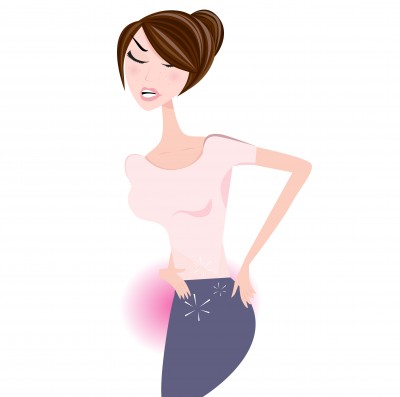I feel that it is incredibly important to educate the public about endometriosis because it is so common One out of 10 women will be affected by it during their reproductive years. Endometriosis describes a condition in which tissue, similar to the lining of the uterus, is found elsewhere in the body. It can lead to extreme menstrual pain, infertility and distortion of reproductive and abdominal organs.
The most common Signs and symptoms of Endometriosis include:
- Painful periods
- Intense cramping may start 1-2 days prior to menstruation and can be so severe that it causes vomiting, diarrhea and fainting.
- Pain at the end of or just AFTER menses
- Irregular cycles
- Anovulatory cycles
- Premenstrual spotting
- Painful intercourse
Risk factors:
- History of sexual abuse
- High levels of stress
- High serum levels of prolactin, cortisol and/or the presence of autoantibodies
- Prior use of intra-uterine devices (IUDs)
- Close female relative with endometriosis
- Infertility
- Basal Body Temperature graph abnormalities: the temperature does not drop significantly at the beginning of the period, or it may drop but then rises during the menstrual bleeding, at ovulation time the temperature takes several days to rise, or it rises but then falls again in a few days
What does Oriental Medicine have to offer for Endometriosis?
The most common symptom of endometriosis is pelvic pain. The pain often correlates to the menstrual cycle, but a woman with endometriosis may also experience pain that doesn’t correlate to her cycle – this is what makes this disease/condition so unpredictable and frustrating. For many women, the pain of endometriosis is so severe and debilitating that it impacts their lives in significant ways.
Endometriosis can also cause scar tissue and adhesions to develop that can distort a woman’s internal anatomy. It is estimated that 30-40% of women with endometriosis may not be able to have children.
The most common symptoms of endometriosis include fatigue, infertility, painful sexual intercourse, intense pain before and during the menstrual cycle, painful urination and bowel movements during menstrual cycle, diarrhea, constipation, nausea, allergies, chemical sensitivities and frequent yeast infections.Western Treatment
Options include medications to control pain, hormone therapy to regulate the growth of the tissue such as birth control, complex surgery to remove the areas of Endometriosis, and in severe cases a complete hysterectomy. Unfortunately a complete cure has not been found for this condition and the standard of treatment is pain management.
How can Oriental Medicine help?
Fortunately, Eastern medicine gives many more options to women suffering from this condition. Chinese medicine views Endometriosis as women having a difficult time shifting from yang to yin and yin to yang during the phases of their menstrual cycle. Premenstrual spotting and irregular BBT charts are signs of this imbalance.
Chinese Medical therapy for endometriosis is therefore to ease these transitions by both correcting the underlying causes of disharmony (such as deficient qi, blood, yang or jing) and by moving qi and blood. Typically, practitioners use a combination of acupuncture, herbal formulas and dietary therapy to accomplish these goals. The main focus of treatment is to enhance circulation and reduce inflammation to restore the pelvic and reproductive organs to normal functioning. One key strength of Oriental Medicine is the way it takes many factors into account to create a cohesive picture, rather than trying to identify ONE specific CAUSE of a disease and “fixing’ that. The pieces to the endometriosis puzzle fit together best when we look at what degree and type of endometriosis is present and how the body is responding to it. Only by performing an individual diagnosis and treatment plan can a practitioner comprise a dynamic treatment strategy to treat this condition and enhance fertility.
For more information about endometriosis, and how it relates to fertility, see my book Your Fertility Program.
To make an appointment for your individualized treatment plan, schedule here!


